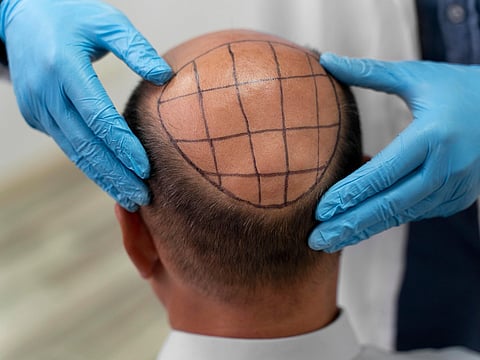Baldness breakthrough: Taiwanese serum regrows hair in 20 days
Scientists: Topical serum made from natural fatty acids triggered hair-growth in bald mice

Imagine a rub-on serum that restores visible hair growth in just three weeks. That may no longer be science-fiction. Scientists at National Taiwan University (NTU) have developed a topical treatment that produced full fur re-growth in bald mice in about 20 days, raising hopes of a future cure for baldness.
How the serum works
The research, published in Cell Metabolism, focused on what happens in the skin when hair follicles regenerate. The team discovered that when the skin is injured or mildly irritated, immune cells (macrophages) move into the underlying adipose (fat) tissue, signaling fat-cells (adipocytes) to release certain monounsaturated fatty acids (MUFAs) like oleic acid (C18:1) and palmitoleic acid (C16:1). These fatty acids feed the hair-follicle stem-cells, energising them to grow new hair.
Instead of relying on irritation, the researchers then used a serum containing those fatty acids directly.
“We found that only monounsaturated fatty acids … such as oleic acids (C18:1) and palmitoleic acids (C16:1), when topically applied to skin, can also induce hair regeneration," Prof Lin Sung-Jan from NTU said.
They reported visible hair regrowth in the treated bald mice within roughly 20 days.
What it means and what it doesn’t
The result is exciting: a topical treatment that could bypass some of the limitations and side-effects of existing hair-loss methods (such as surgery, finasteride, minoxidil) and adopt a more natural, fat-cell-metabolism-based route. The fatty acids used are naturally occurring in humans and in many plant oils, which may favour safety.
But there are important caveats. The research is so far in mice (and some lab tests on human hair follicles), not yet in human clinical trials. As one expert told Newsweek about the mouse study: “In humans, though, more than 90 percent of scalp hair follicles are ‘in a growing phase... so the stimulation of resting hair follicles is not going to have a dramatic effect.”
The next steps are critical: human-scalp trials, determining the proper formulation, dosage, safety and efficacy in real-world hair-loss conditions.
Why this could be significant
If the approach works in humans, it could shift the paradigm of hair-loss treatment. Instead of modifying hormones (finasteride) or relying on micro-surgery, one might use a simple topical fatty-acid serum that re-awakens dormant hair-follicle stem-cells. That holds appeal in terms of cost, convenience and side-effect profile.
The road ahead
The NTU team has already patented the formula and are now looking toward human trials. They emphasise that though the early results are strong, it remains experimental. Dermatology and hair-loss specialists caution patience and note that many “miracle” results in mice don’t always translate to human success.
Sign up for the Daily Briefing
Get the latest news and updates straight to your inbox




